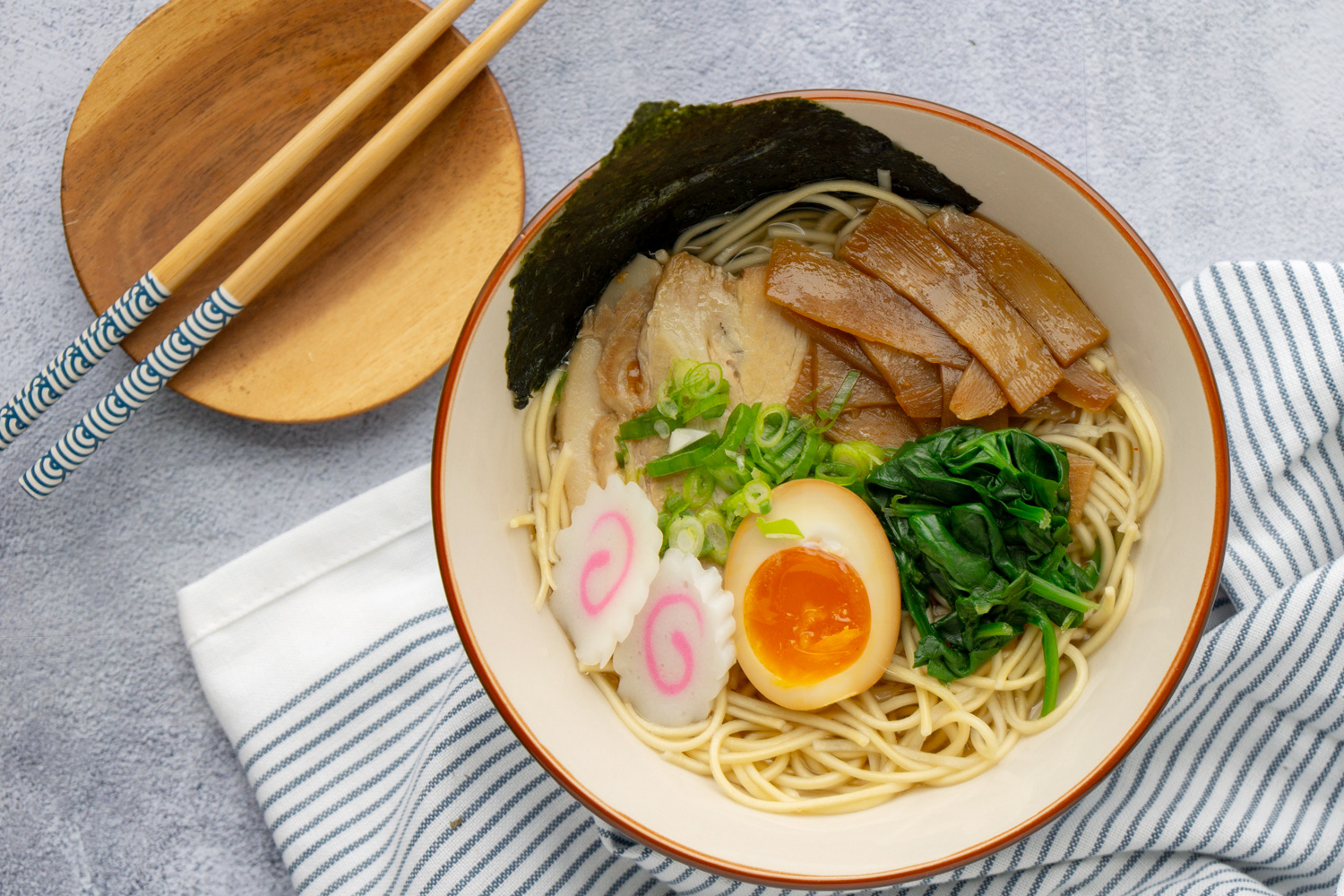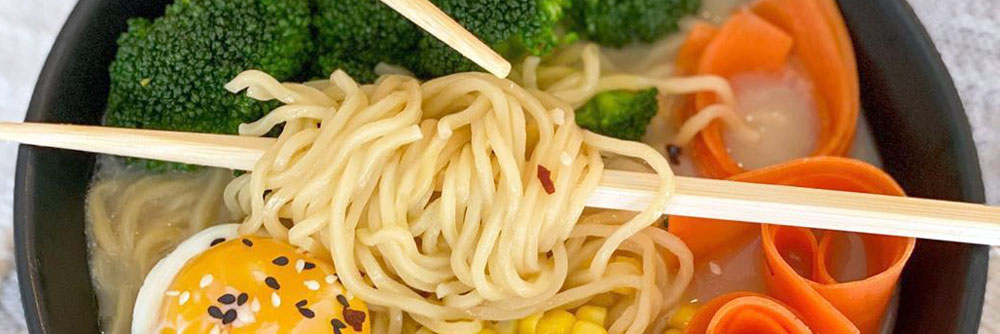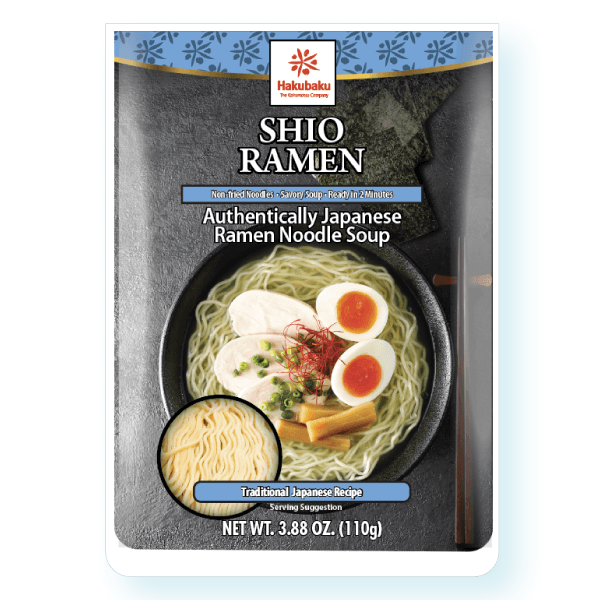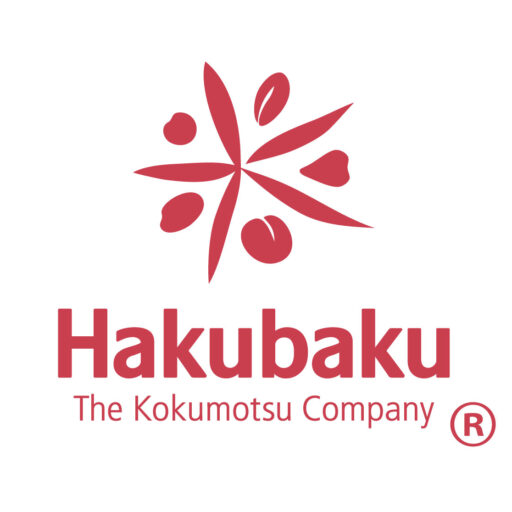It begs the question..could shio ramen be the ultimate ramen? Ramen is fairly popular in North America and seems to be all over the place at the supermarket. Is it really true Shio Ramen? If you are a ramen connoisseur and eschew the 10 for $1 ramen varieties; then you know the answer. But what is Shio Ramen and how did it spur the development of ramen in the culinary history in Japan? Let’s take a look at shio ramen and answer some of what makes the ultimate bowl of shio ramen so good.
What Makes Shio Ramen, Shio?
塩 (Shio) is the Japanese word for ‘salt.’ Thus, 塩ラーメン (shio ramen) means ‘salt ramen.’ Shio ramen is a light soup broth, which is a nostalgic and familiar taste for Japanese people. Since salt is the oldest known seasoning used in ramen, shio is considered to be the oldest version of ramen. Although there is no substantial evidence, many believe that it was invented in Hakodate, where it is still the prevalent ramen variety.

Compared to Tonkotsu (which is a bone broth and cloudy) Shio can have subtleties based on the region of Japan and local ingredients that are readily available. You often see four basic ramen categories: Shoyu, Tonkotsu, Shio, and Miso. But none has the regional variation like Shio ramen.
Any ramen that gets its salinity and flavor primarily from salt, rather than miso or soy sauce, can be called a shio ramen. Made with a light and clear blend of chicken stock and dashi, is flavored with a solution of salt, lemon, and kombu (dried kelp) flavor adding “umami” to the soup.
Get yummy shio recipes here.

Why Shio Ramen Tastes so Good
To break down what makes Shio more umami than other ramen bowls you have to look at what key elements make up the broth profile. Dashi is what gives the bowl its umami. The goal of a good bowl of shio ramen is to achieve a light broth that does not outweigh the noodles and the toppings. Much of what makes a good bowl is preparation. Some key steps make all the difference:
- Soaking the kombu and shiitakes overnight vastly improves the flavor of the dashi.
- Making the dashi fresh and blending it with the clear chicken stock results in superior flavor.
- Fresh noodles that use the best wheat
Just these little differences can make all the difference between a so-so bowl of ramen and a fantastic experience.
How to eat ramen properly
Ramen is eaten with chopsticks and a Chinese style spoon. A vareity of small toppings are easier to assemble with the noodles, and for drinking the soup. It is also alright to lift up the bowl to drink the soup directly from the bowl.
Ramen noodles get soggy quickly and should be eaten immediately after they are served. As with other noodle dishes in Japan, a slurping sound is made when eating ramen. The slurping enhances the flavors and helps cool down the piping hot noodles as they enter your mouth. At the end of the meal, it is alright to leave some unfinished soup in the bowl. You do not need to drink the whole bowl to be polite, although it is considered a compliment to the chef to do so.\
Could Shio Ramen be the Ultimate Ramen Flavor?
By now we think that shio is one of our most favorite flavors of ramen. So flexible and tasty why not find out for yourself?
Enjoy Japanese traditional shio ramen at home today!

Want to try this delicious umami ramen? We can help! We have Authentic Japanese Shio Ramen ready to make with flavorful broth and non-fried traditional Japanese noodles.
Want some traditional Japanese recipes?
You can try making the different variations of Shio in the comfort of your own home!
Check out these recipes today! >>LEARN


